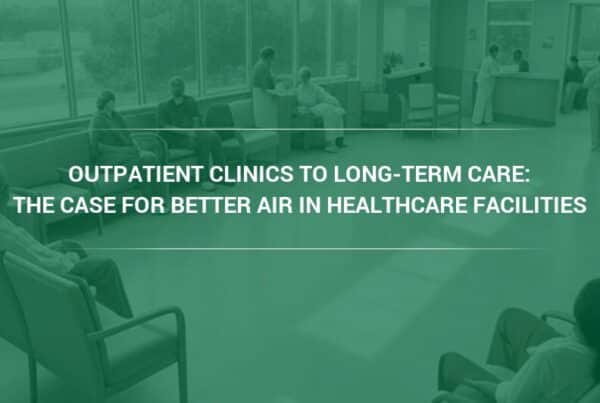A recent European study, similar to some conducted in North America, “showed an independent effect of several indoor air pollutants and comfort parameters on respiratory morbidity among the elderly permanently living in nursing homes.”
New nursing home facilities are being constructed at a record pace and existing nursing homes are over-taxed with too many occupants as America ages. 13.4% of our total population is over 65 and is being followed by the baby-boomer generation, one of the largest population groups in our history. Many of these facilities are in or border on urban areas, locales with air quality problems as pollution follows population. Unfortunately, nursing home residents are one of the highest susceptible segments of our population for lung problems, chronic obstructive pulmonary disease (COPD) and other maladies that are prevalent in buildings where population density is high and compromised individuals reside.
These buildings also have problems associated with the type of heating and air conditioning equipment that is used to recirculate the air. Often they are limited by small fans that barely meet the air exchange requirements to provide clean indoor air. Many also have limited ventilation air introduction, used to dilute contaminants, and based upon their urban location outside air may not be acceptable because of high outside pollutant levels. Ozone, a pollutant that affects the geographic living area of at least 1 in 4 residents of the United States is of particular concern because of its detrimental effect upon people that already have comprised breathing systems.
Through consultation with an air filtration design expert many of these facilities can address these deficiencies by installing high efficiency particulate filters and carbon filters to address local ozone problems. An additional benefit of carbon is its high removal efficiency on bio effluents and other odor problems commonly associated with nursing facilities.
If these experts are consulted in the design stage, often central system HVAC units are installed.
Central systems are common in commercial buildings such as office and retail spaces and are much more conducive to applying high efficiency filtration. School construction of late has also moved towards central systems and away from through-the-wall or small package units after analyses show that short term amortization is favorable as is the environmental quality supplied to the school occupants. The same considerations should be applied to nursing homes for our aging population, their healthy existence even more dependent upon proper air quality.
Existing nursing homes may also address their air quality concerns through retrofitting of their heating and air conditioning units. In some cases it may be as simple as upgrading the existing air filter. Supplemental steps could include a central system filter upgrade or even increasing the number of air changes the system provides. Increasing air filtration efficiency, or increasing air changes to the occupied areas can have a beneficial effect on the air provided to the occupants of the building.
Camfil, the world’s largest air filter manufacturer, has air filtration experts around the world that can assist with your air quality requirements. Often they can apply the same principles or engineering designs used in hospitals and other medical facilities, even cutting filter expenditures and energy costs in the process.



